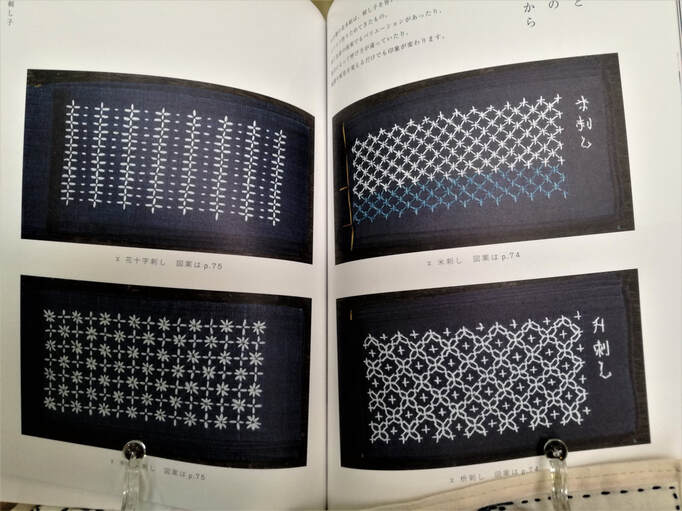|
Greetings sashikoists. As it’s been so long since I’ve written a book review, I recently went to check out the shelves in a large Tokyo bookstore to see what’s new. Not much has changed in relation to how disappointedly few books about sashiko in Japanese there are, but I did pick up some new ones. This one jumped out at me as something slightly different. Sashiko no komono to otsukuroi (small items made of sashiko and sashiko mending) by Saki Iiduka was published in November 2019 by Nihon Vogue-sha. It seems to reflect a trend towards focusing on sashiko’s functionality for mending and recycling, rather than simply making pretty handicrafts, as many of the books in the past have. This one is very much a reflection of the author’s lifestyle, and shows how sashiko fits in with her ethos and way of living. Ms Iiduka (pronounced ee-zu-ka) studied painting at university and spent ten years living in the rural prefecture of Yamagata, where she had opportunity through her studies to closely observe rural life. She first encountered sashiko after graduation when she and a group of friends ran a café and lifestyle workshops in an old school building. She began making items for everyday use from sashiko, using and recycling whatever materials were at hand. In this sense her sashiko is close to the origins of sashiko, as a means of strengthening and reusing precious fabric. Many of the items pictured are things that she has made and uses. Nowadays she lives in a village in Gunma prefecture with her family and has a studio called Kaeru-top where she runs sashiko workshops, sells sashiko and runs a café. The first section of the book introduces 21 different items with instructions for making each at the back, and the stitch pattern diagrams shown to actual scale, which is a plus. The items include an amulet bag, brooch, pincushion, coaster, name card case, purse, book cover, pot holder, shoulder-bag purse, box-shaped pouch, sturdy drawstring bag, tote bag, lunch wrapper, stole, and boro drawstring bag. The section on the basics of sashiko has a series of photographs that show the process for drafting and stitching three different patterns (hishizashi diamond stitch, komezashi rice stitch, and hon-juji-hishikake real cross diamond woven stitch) in very clear detail, with the reverse side shown as well. Then there is a section on mending, once again with close up photographs showing how to mend holes, and photographs of suggested items to use mending techniques on, such as shirt collars and cuffs, cushions and knitted socks. My favourite section shows the author’s handmade swatches of stitch samples that she has made over the years for her own reference. I was pleased she wrote that names for the same pattern and variations are different in different regions, as this is something I always struggle with. Just as I think I’ve learned the name of a pattern I will find it in another book that gives it a different name. Nihon Vogue books are always high quality and this one is no different. What I liked most was that it is a real reflection of the author’s actual lifestyle with an emphasis on practicality, which gives it a pleasing freshness and authenticity.
0 Comments
Leave a Reply. |
Watts SashikoI love sashiko. I love its simplicity and complexity, I love looking at it, doing it, reading about it, and talking about it. Archives
September 2022
Categories
All
Sign up for the newsletter:
|






 RSS Feed
RSS Feed



